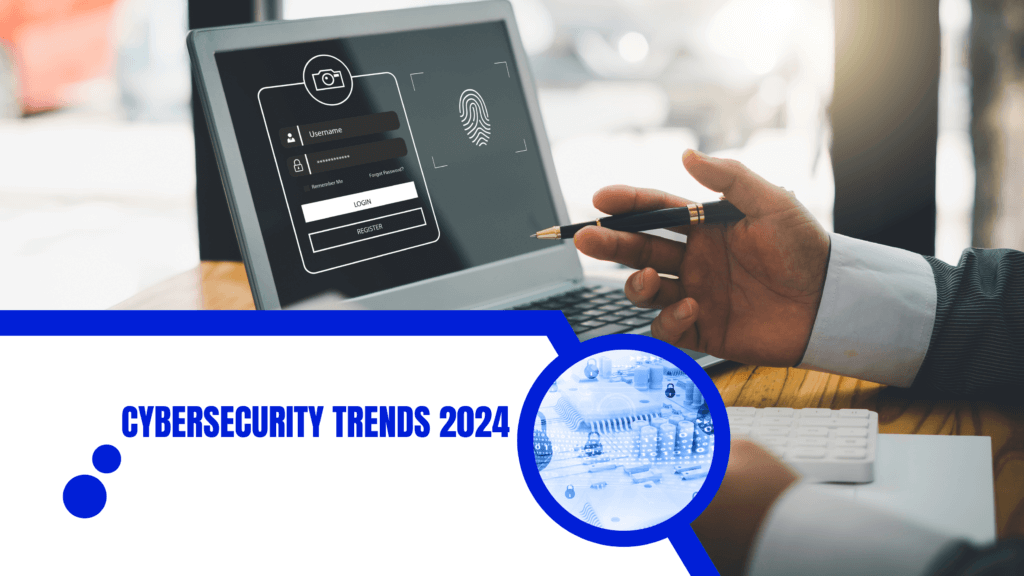In today’s world, it is crucial to stay updated on security trends. As technology advances, so do the tactics of cybercriminals trying to breach your infrastructure and access sensitive information. To assist you in staying informed and improving your protection, we have compiled a list of emerging security trends.
Zero Trust

Zero Trust is based on the concept of never trusting and always verifying. Unlike traditional security approaches that assume everything within an organization’s network is trustworthy by default, Zero Trust assumes no entity should be trusted, and that the company’s network security is constantly at risk. It advocates for granting the least privilege access for every task and continuously validating every stage of digital interaction.
Let’s use your mobile phone as an example to explain the concept of Zero Trust. In this scenario, your mobile phone represents a device that needs to be protected from unauthorized access.
In a traditional security model, you might set a password to lock your phone. Once you unlock your phone with this password, the system trusts that you are a legitimate user and grants you access to all the apps and data on your phone. However, In a Zero Trust security model, even if someone knows your phone’s password, they cannot automatically access all the apps and data on your phone.
Here’s how it works:
Authentication: When you enter your password to unlock your phone, it’s just the first step in the authentication process. The system doesn’t automatically trust that you are a legitimate user based on this password alone.
Continuous Verification: After you unlock your phone, the system continues to verify your identity through various means, such as biometric authentication (e.g., fingerprint, face recognition), device health checks, and behavioural analysis.
Limited Access: Even if someone knows your password and manages to unlock your phone, they would only have limited access to certain apps and data based on their permissions. For example, they might not be able to access your banking app or sensitive work documents without additional verification.
Conditional Access: The system can enforce conditions for accessing certain apps or data, such as requiring a secure network connection or specific device settings.
Logging and Monitoring: The system logs and monitors user activity to detect any suspicious behaviour or unauthorized access attempts, triggering alerts for further investigation. At times, you may receive a notification indicating that suspicious activity has been detected, requiring you to reconfirm your identity to regain access to your system.
This measure ensures that even if hackers or unauthorised users compromise one team member’s device or credentials, they cannot easily access all other company resources. Each access attempt requires different authentication methods, adding layers of security.
AI and Machine Learning In Cybersecurity

AI and machine learning are increasingly being utilized in cybersecurity to enhance security measures. They can analyze vast amounts of data to detect potential threats, assisting security teams in identifying and mitigating risks proactively. When combined with AI security tools, ML algorithms can bolster an organization’s infrastructure by swiftly detecting and addressing network anomalies.
Cloud Security

As more companies transition their operations to the cloud, the significance of securing and protecting their data in this environment cannot be emphasized enough. Cloud security encompasses safeguarding data, managing privileges, protecting infrastructure, and implementing device controls. It comprises a comprehensive set of technological protocols and best practices designed to protect cloud computing environments.
For instance, consider a multinational corporation that stores its sensitive customer data, including financial information and personal details, in the cloud. The company, however, fails to implement proper cloud security measures, such as encryption and access controls. Hackers can exploit vulnerabilities in the company’s cloud infrastructure and gain unauthorized access to sensitive customer data. The hackers then sell this information on the dark web or use it for malicious purposes, such as identity theft or financial fraud.
As a result, the company faces severe reputational damage, loss of customer trust, and potential legal consequences due to the data breach. Additionally, the costs of fixing the problem, paying fines, and dealing with lawsuits can be high. This could result in financial losses and disruptions to operations.
This situation emphasizes the crucial need for strong cloud security measures. Without these protocols, companies face the risk of data breaches and their consequences. This highlights the importance of comprehensive cloud security practices to protect sensitive data and keep business operations running smoothly.
Automotive Cybersecurity

Today’s vehicles are equipped with advanced software that enables connectivity and features like driver assistance systems and cruise control. However, this connectivity also exposes cars to potential attacks from hackers.
Technologies such as Wi-Fi and Bluetooth within vehicles can be exploited to gain control over them or eavesdrop on conversations using built-in microphones. These hackers can take control of the car’s systems, such as the brakes or steering, putting drivers at risk. Moreover, these hackers could also access sensitive user data stored in the vehicle’s systems, such as GPS location history, personal preferences, and even financial information if connected devices like smartphones are compromised through the vehicle’s infotainment system.
To prevent such attacks, automotive cybersecurity focuses on protecting the vehicle’s electronic systems, communication networks, software, control algorithms, and user data. Manufacturers and cybersecurity experts work together to implement robust security measures, such as encryption, firewalls, and intrusion detection systems, to safeguard vehicles from malicious attacks and unauthorized access.
IoT security

IoT security is crucial due to the rising number of IoT devices. Many lack basic security features, leaving them vulnerable to cyberattacks. To secure these devices, strong authentication, encryption, and access control measures are essential. This helps prevent them from being hacked and used to access the broader network. Additionally, regular security updates and patches are crucial to protect against emerging threats. Securing the network infrastructure that IoT devices connect to is essential, including using firewalls and intrusion detection systems. Educating users about the importance of IoT security and best practices is also vital in ensuring the overall security of IoT ecosystems.
Without proper IoT security measures in place, the risk of cyberattacks and data breaches increases significantly. For example, imagine a smart home with various IoT devices, including smart locks, cameras, and thermostats. These devices are interconnected and controlled remotely via a mobile app. Now, suppose these IoT devices lack basic security features, such as strong authentication and encryption. A hacker could exploit these vulnerabilities to gain unauthorized access to the smart home network. They could then remotely control the smart locks to unlock doors, access security camera feeds to spy on the occupants, or even manipulate the thermostat to cause physical damage or discomfort.
Furthermore, if these compromised IoT devices are connected to the broader network, such as the home’s Wi-Fi network, the hacker could use them as a gateway to launch more extensive attacks, such as accessing personal and financial information stored on other devices connected to the network. This lack of IoT security not only jeopardizes the privacy and safety of the smart home’s occupants but also poses a broader threat to the entire network and its connected devices. This highlights the critical importance of implementing strong IoT security measures to protect against potential cyber threats.
By staying informed about these emerging security trends, you’re in a better position to protect yourself and your organization from cyber threats. Cybersecurity is an ongoing effort, and remaining vigilant is essential for staying safe online.








